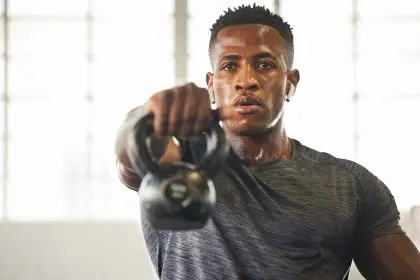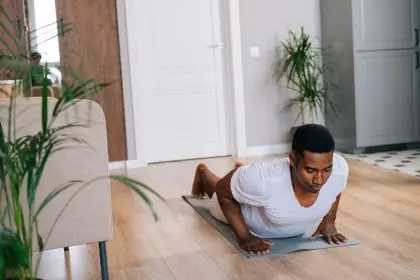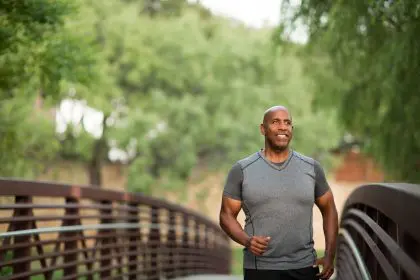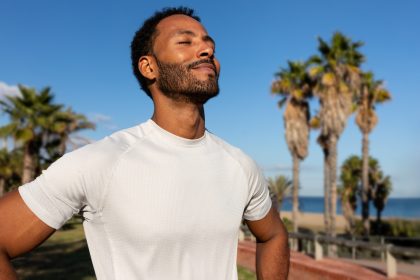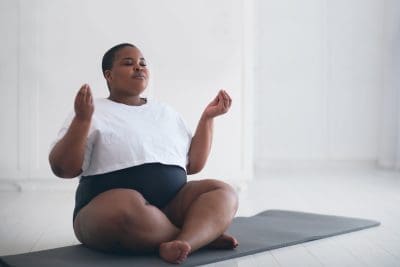Modern research continues to uncover fascinating links between physical fitness and sexual wellness, revealing how regular exercise shapes both physiological and psychological aspects of intimate health. As more people prioritize holistic wellness, understanding this connection becomes increasingly important for overall quality of life. Recent studies indicate that individuals who maintain regular exercise routines report significantly higher levels of sexual satisfaction and overall relationship happiness.
Beyond the physical
While many recognize exercise for its visible benefits, its impact on sexual health extends far deeper, influencing everything from hormone levels to emotional well-being. This intricate relationship affects multiple aspects of intimate health, creating a foundation for enhanced sexual wellness. Understanding these connections helps individuals make informed decisions about their fitness routines.
1. The circulation connection
Cardiovascular fitness fundamentally transforms sexual health through improved blood flow throughout the body. Regular aerobic exercise enhances circulation to intimate areas, directly impacting arousal and performance for both men and women. Research demonstrates that even moderate improvements in cardiovascular fitness can lead to significant enhancements in sexual function.
Optimizing vascular health
Scientific research demonstrates that consistent cardiovascular exercise improves blood vessel function and promotes healthy circulation patterns. This enhanced blood flow provides crucial support for sexual response and function. Regular aerobic activity strengthens the heart and improves peripheral circulation, ensuring optimal blood flow to all body tissues.
Targeted cardiovascular activities
Different forms of cardiovascular exercise offer varying benefits for sexual health. High-intensity interval training can boost testosterone levels and improve endurance, while steady-state cardio helps build stamina and reduces stress. Swimming, cycling, and brisk walking provide excellent low-impact options for improving circulation.
2. Hormonal harmony through movement
Physical activity powerfully influences hormone balance, creating optimal conditions for sexual health. Regular exercise helps maintain healthy levels of crucial hormones while reducing stress hormones that can interfere with intimate function. Understanding this hormonal relationship helps explain why consistent exercise often leads to improved libido and sexual satisfaction.
Natural hormone optimization
Exercise stimulates the production of essential hormones that support sexual health, including testosterone and endorphins. This natural optimization creates a foundation for improved libido and sexual response. Regular physical activity also helps regulate cortisol levels, reducing stress-related hormone imbalances that can impact sexual function.
Balancing intensity and recovery
Finding the right balance of exercise intensity proves crucial for hormonal health. Overtraining can lead to decreased testosterone levels and increased cortisol, while appropriate training volumes optimize hormone production. Proper recovery between workouts ensures the body maintains healthy hormone levels.
3. Mental wellness and intimate health
Regular physical activity transforms mental health, directly impacting sexual wellness through improved mood, reduced anxiety, and enhanced body image. This psychological boost creates a positive cycle that supports intimate relationships. Exercise releases endorphins and other neurotransmitters that enhance mood and reduce stress.
Building confidence through fitness
Consistent exercise develops physical competence and body awareness, fostering self-confidence that extends into intimate situations. This enhanced self-assurance often leads to more satisfying sexual experiences. Achievement in fitness goals typically translates to improved body image and sexual confidence.
Stress management benefits
Exercise provides powerful stress relief, helping individuals manage anxiety and depression that might otherwise impact sexual function. Regular physical activity creates a mental reset, allowing better focus on intimate connections and relationships.
4. Strength and flexibility benefits
Targeted exercise programs improve physical capabilities that enhance intimate experiences. Core strength, flexibility, and overall muscle tone contribute to both comfort and satisfaction during sexual activity. Specific exercises can address common physical limitations that might impact sexual function.
Practical movement patterns
Specific exercises, including pelvic floor training and flexibility work, directly support sexual function. These movements build strength and control in key muscle groups while improving overall body awareness. Regular practice of these exercises can lead to improved sexual function and satisfaction.
Core stability importance
A strong core provides the foundation for better posture and movement control during intimate activities. Targeted core exercises improve stability and endurance while reducing the risk of back pain that might interfere with sexual activity.
5. Relationship enhancement through shared activity
Couples who exercise together often experience improved intimacy and communication. Shared physical activities create opportunities for connection while supporting mutual health goals. Partner exercises can strengthen both emotional and physical bonds.
Building stronger connections
Partner exercises and activities foster trust, communication, and physical awareness, strengthening both emotional and physical aspects of intimate relationships. Shared fitness goals create opportunities for mutual support and celebration of achievements.
Communication through movement
Physical activity provides unique opportunities for nonverbal communication and trust-building between partners. Partner workouts can improve coordination and physical awareness while creating shared experiences that enhance intimacy.
Creating sustainable fitness habits
Developing consistent exercise routines requires practical strategies that fit within daily life. Success comes from building sustainable habits that support both fitness and intimate health goals. Small, consistent actions often lead to significant long-term improvements.
Start with realistic goals that acknowledge current fitness levels and time constraints. Gradually increase activity levels while maintaining consistency in basic routines. Focus on activities that provide both enjoyment and health benefits.
Understanding that fitness and sexual health improvements develop gradually helps maintain motivation during the journey. Setting realistic milestones and celebrating small victories supports long-term success in both areas.
Anticipating and planning for common challenges helps maintain consistent exercise habits. Time management strategies, backup workout plans, and support systems all contribute to long-term success.
Professional guidance considerations
Working with qualified fitness professionals can help develop appropriate exercise programs that support sexual health goals. Personal trainers and healthcare providers can offer valuable guidance for addressing specific concerns through targeted exercise.
Remember that improvements in physical fitness and sexual health develop gradually through consistent effort. Focus on sustainable changes that support overall wellness while building toward specific goals. The connection between physical fitness and sexual health offers powerful motivation for maintaining regular exercise habits.
By understanding and acting on this relationship between fitness and sexual wellness, individuals can enhance both their physical well-being and intimate experiences. Consistent attention to both areas creates a positive cycle of improvement that benefits overall quality of life.





